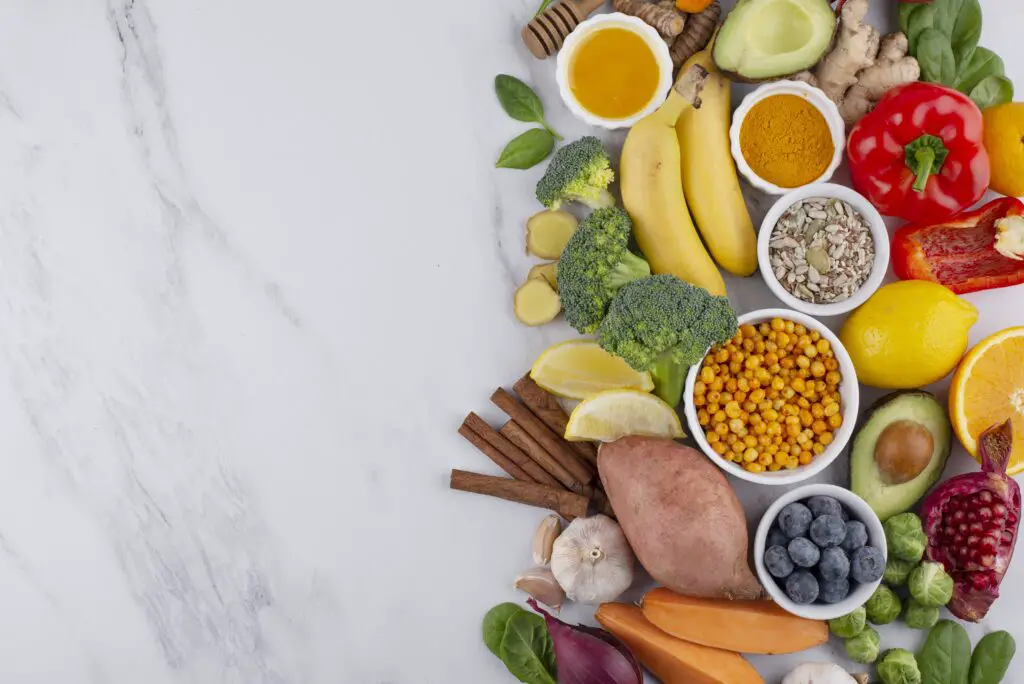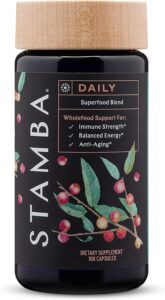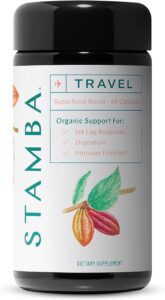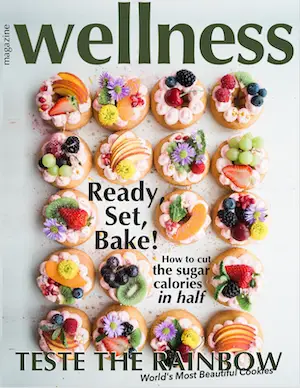Do the terms “superfoods,” “power foods,” or “top 10 foods” pique your interest? The idea of a superfood can be tempting to those of us looking to better our health. We might picture a superfood that has unique properties like helping people lose weight or curing illnesses. A food is promoted as a superfood when it contains high concentrations of desirable nutrients, is associated with the prevention of a disease, or is thought to provide several concurrent health benefits above and beyond its nutritional value. However, there is no scientifically based or regulated definition for a superfood. A superfood is defined as “a food that is high in substances (antioxidants, fiber, or fatty acids) considered advantageous to a person’s health” in the Webster Dictionary, which attests to its widespread use.

The First Superfood
Where did the phrase “superfood” come from? It’s interesting that none of them came from professionals that formally study food, such nutritionists and dietitians. The oldest known instance may have occurred in the early 20th century, around World War I, and was utilized as a marketing tactic for food. The United Fruit Corporation launched a zealous marketing initiative to highlight their main import of bananas. It released fact sheets including The Food Value of the Banana and Points About Bananas. Initially, the business had promoted the usefulness of bananas in a daily diet since they were inexpensive, nutritive, simple to digest, widely accessible, good both cooked and uncooked, and naturally wrapped in a sterile box. They recommended including bananas in salads for lunch, fried with steak for dinner, and cereal for morning in order to encourage them to eat more.
The word, however, gained enormous traction after being recommended in medical journals as a result of doctors publishing their research on the use of a banana diet to cure diseases including celiac disease and diabetes. According to the American Medical Association, including bananas in a child’s diet will either treat or relieve the symptoms of celiac disease (gluten had not yet been discovered as the true culprit). Bananas quickly gained a reputation for being healthy, and moms started using them regularly in their children’s and newborns’ diets even if they did not have celiac disease. The United Fruit Corporation incorporated information about these health advantages in its marketing materials, and headlines about bananas in the news media helped to start the banana diet fad.
Superfood Equals Supersales
A new superfood seems to appear on a regular basis in the 21st century because information now spreads at viral speed. The necessary components are in place, including infomercials and marketing campaigns of the relevant food sectors, scientific study on a specific food, attention-grabbing headlines from the quick-fire popular press, and more. Superfoods frequently result in mega sales, spawning a billion-dollar industry. Consumers are prepared to spend extra for items that are viewed as being healthy, and health claims on labels seem to assist, according to a Nielson survey. Curiously, goods with a health claim that are also widely regarded as being healthy sell the best. This may be because doing so increases the likelihood that a consumer will buy a healthy product by adding to their awareness about it. According to the survey, approximately 80% of participants believe that eating particular foods can help treat or prevent diseases including obesity, diabetes, hypertension, and high cholesterol. Thus it should come as no surprise that plant-based foods like fruits, vegetables, and whole grains frequently top lists of superfoods because they are usually regarded as being beneficial to health. The food business is undoubtedly motivated to promote a product as a superfood in order to increase sales. According to Mintel data, the number of products marketed as “superfoods,” “superfruits,” or “supergrains” was released worldwide in 2015, rising by 36%, with America leading the way. Sales of chia seeds, kale, quinoa, and other ancient grains increased steadily in 2017. According to statistics from food and beverage startup firms, the top 13 trending ingredients as of late include pea protein, seaweed, ginger, turmeric, matcha, oats, barley, and chickpeas.
The Story of the Blueberry
After receiving a subliminal nod from government-sponsored research, blueberries, another culinary hero, reached their pinnacle in the first decade of the twenty-first century. Scientists from the National Institute on Aging and the United States Department of Agriculture developed the Oxygen Radical Absorbance Capacity in 1991 as a ranking system. It was applied to gauge the antioxidant power of various meals. Antioxidants are thought to be health-promoting chemicals because they may help lower the levels of harmful free radicals in the body. On its website, the USDA has an ORAC database that lists foods with high ORAC scores, such as cocoa, berries, spices, and legumes. Even if the evidence was dubious, blueberries and other items at the top of the list were vigorously marketed as cure-alls for everything from cancer to brain health. Twenty years later, the USDA decided that antioxidants serve a variety of purposes, not all of which are connected to free radical activity, and thus withdrew the information and erased the database. Despite the decline, according to USDA data, U.S. blueberry output doubled from 1998 to 2006 and kept growing every year through 2016.
How Your Body Makes Energy From Food
The foods we consume and the liquids we drink provide the body with energy. When you eat, your body disassembles the large amount of chemical energy that is included in food into smaller components and absorbs them for use as fuel. Carbohydrates are the most significant energy source among the three main nutrients—protein, fats, and carbs. When carbs are no longer available, the body can use protein and lipids as an alternative source of fuel. The chemical processes in your metabolism convert the food you eat into energy in your body’s cells. The Basal Metabolism, which accounts for the majority of the body’s energy requirements, occurs while it is at rest. The body needs this little energy to continue performing its essential processes, such breathing, blood circulation, and organ function. The Basal Metabolic Rate (BMR), which varies depending on heredity, sex, age, height, and weight, is the rate at which energy is used for these purposes. When muscle mass declines with age, your BMR lowers. Getting enough nutrients from our diet is necessary for optimal energy metabolism; otherwise, our energy metabolism underperforms and we experience fatigue and sluggishness. All foods give you energy, but some in particular help you have more of it. These include foods like bananas, which are a great source of carbohydrates, potassium, and vitamin B6, fatty fish like salmon or tuna, which are a good source of protein, fatty acids, and B vitamins, brown rice, which is a good source of fiber, vitamins, and minerals, and eggs (source of protein). There are actually numerous foods that offer an abundance of energy, especially those that are high in important vitamins, minerals, antioxidants, and fiber as well as carbohydrates for quick energy and protein or fiber for a slower release of energy. Cellular respiration is the mechanism by which food is transformed into ATP (Adenosine Triphosphate) at the cellular level. The energy that the cell utilizes for numerous biological functions, such as muscle contraction and cell division, is provided by the molecule ATP. Aerobic respiration is the term used for this process, which needs oxygen.
Carbon dioxide + Water + Energy Glucose + Oxygen (as ATP). In the beginning of the process known as digestion, big dietary macromolecules are broken down by enzymes into straightforward components. Through the action of certain enzymes, proteins are converted into amino acids, polysaccharides into sugars, and lipids into fatty acids and glycerol. The smaller subunit molecules must then enter the body’s cells after this procedure. They initially move into the cytosol, which is the watery portion of a cell’s cytoplasm, where the process of cellular respiration starts.
Help Your Body With STAMBA
They have uncovered incredibly straightforward wellness secrets, and they base their methods on an age-old maxim: food is power. The Sanskrit word STAMBA, which in Hindi means “pillar,” alludes to the fundamental wellness framework of the human body. By promoting healthy immune function, vital energy, microbiome health, and empowered stress response, their collection, which is rooted in reverence for the Earth and puts the expanding understanding of self-care at the forefront, serves to continuously elevate your wellness baseline.
Daily Immune+ | Premium Superfood Capsules for Immune Strength, Digestive Health and Overall Wellness

The antioxidant-rich chaga mushroom found in their real superfood capsules strengthens your body’s natural immune defenses for a healthy immunological response. Its freeze-dried camu camu has unrivaled levels of naturally occurring vitamin C, and their Tetra SOD marine phytoplankton’s acclaimed antioxidant enzymes also significantly boost your defenses. These vegetable capsules are loaded with prebiotics, digestive enzymes, and dietary fiber that improve the function of your gastrointestinal, metabolic, and excretory systems. Our anti-aging blend’s antioxidant-rich superfoods work to counteract the negative effects of stress, dangerous free radicals, and pollutants. In addition to offering this support, chaga, reishi, maqui, acai, camu-camu, turmeric, and cocoa also have powerfully beneficial qualities that nourish general wellness and aid in the promotion of healthy, clear skin.
Travel Defense+ | Travel Superfood Capsules for Immune Defense & Digestion | Works Against Jet lag & Motion Sickness

It’ll stabilize your energy levels and improve your capacity to adapt to changing sleep patterns. It provides cutting-edge assistance for jet lag recovery with broad-spectrum adaptogens and antioxidants. It is rich in vitamin C from camu camu. Along with the therapeutic mushrooms cordyceps, chaga, and reishi, it promotes respiratory health and an energized immunological response. The green papaya and freeze dried ginger root support your digestive health and help with motion nausea in addition to helping with altitude or sea sickness. They freeze-dry and cold-process pure whole foods to create the super food powders that go into their capsules. For greatest benefit, these procedures maintain the substances’ efficiency and potency. There are no synthetics, GMOs, gluten, fillers, isolates, or additives present in these capsules that strengthen the traveler’s immune system. You’ve discovered the greatest.
Conclusion
Superfoods are frequently healthy, but it’s obvious that the word is more useful for generating sales than it is for offering the best nutritional advice. A drawback of superfoods is that their names alone may induce individuals to focus on a small number of particular foods, obstructing their awareness of other, less-hyped foods that are just as healthy. Not only does eating a variety of key vitamins and minerals boost our health, but it also helps us avoid consuming too much (or too little) of any one nutrient. Also, it keeps our meals delicious and intriguing.
So yes, learn about different cuisines and how to choose, cook, and enjoy them, but don’t be sidetracked by the newest overhyped dish or fad. Instead, concentrate on assembling a “super plate” with a variety of nutritious and appetizing dishes.




